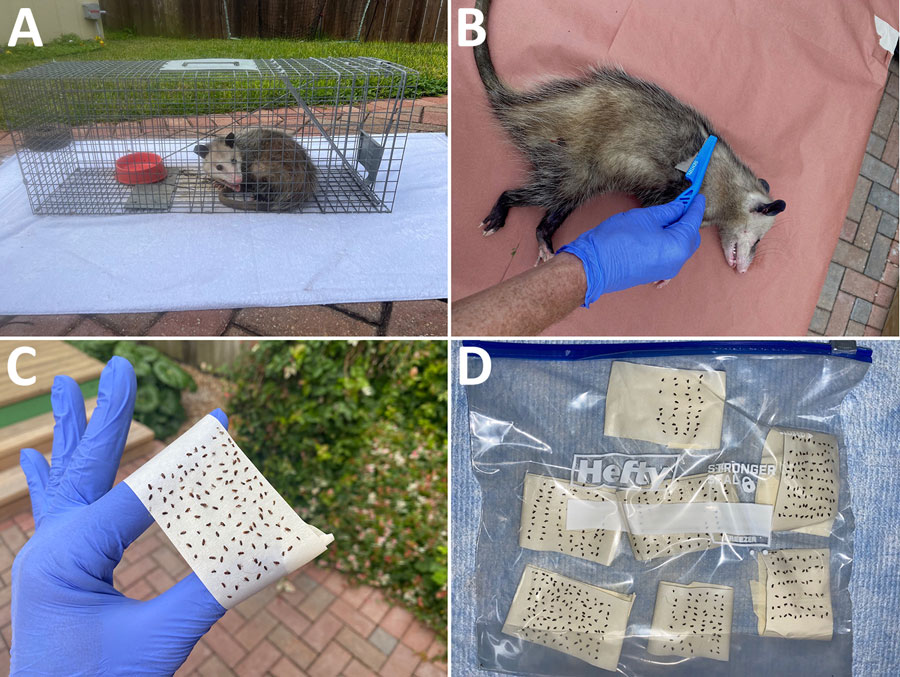Volume 31, Number 6—June 2025
Dispatch
Oral Flea Preventive to Control Rickettsia typhi–Infected Fleas on Reservoir Opossums, Galveston, Texas, USA, 2023–2024
Figure

Figure. Trapping and flea collection in a study of use of oral flea preventive to control Rickettsia typhi–infected fleas on reservoir opossums, Galveston, Texas, USA, 2023–2024. A) Trapped opossum; B) anesthetized opossum being combed for fleas; C) masking tape displaying collected fleas; D) sealable plastic bag containing fleas from a single opossum. To determine the effectiveness of spinosad (Elanco, https://farmanimal.elanco.com) as a flea-killing agent on opossums, cage traps were baited with canned cat food mixed with a crushed 270-mg spinosad flea control tablet for the experimental group and cat food without flea control for opossums in the control group. Fleas collected from opossums ingesting spinosad were almost uniformly dead; thus, they were straightforward to collect, easy to organize when placed on tape, and remained affixed to the tape (panels C, D). On the contrary, fleas in the control group were uniformly alive when collected, moved vigorously, and could not be affixed to the tape in an organized row-by-row manner, as seen for fleas in the experimental group.